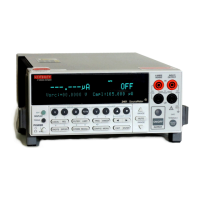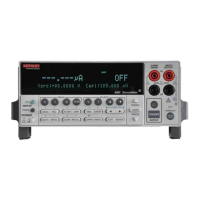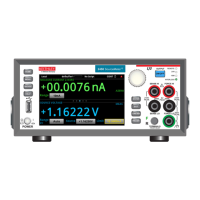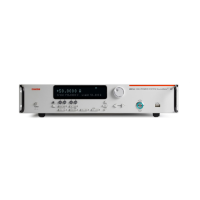Interactive SourceMeter® Instrument Reference Manual Section 8:
2461-901-01 A/November 2015 8-155
Details
This command enables or disables a limit test for the selected measurement function. When this
attribute is enabled, the limit Y testing occurs on each measurement made by the instrument. Limit Y
testing compares the measurements to the high and low limit values. If a measurement falls outside
these limits, the test fails.
Example
smu.measure.func = smu.FUNC_DC_VOLTAGE
smu.measure.limit[1].enable = smu.ON
Enable testing for limit 1 when measuring
voltage.
Also see
smu.measure.limit[Y].autoclear (on page 8-153)
smu.measure.limit[Y].clear() (on page 8-154)
smu.measure.limit[Y].fail (on page 8-155)
smu.measure.limit[Y].high.value (on page 8-157)
smu.measure.limit[Y].low.value (on page 8-158)
smu.measure.limit[Y].fail
This attribute queries the results of a limit test.
Type TSP-Link accessible Affected by Where saved Default value
Usage
result = smu.measure.limit[Y].fail
The results of the limit test for limit Y:
• smu.FAIL_NONE: Test passed; measurement under or equal to the high limit
• smu.FAIL_HIGH: Test failed; measurement exceeded high limit
• smu.FAIL_LOW: Test failed; measurement exceeded low limit
•
smu.FAIL_BOTH: Test failed; measurement exceeded both limits
Details
This command queries the result of a limit test for the selected measurement function.
The response message indicates if the limit test passed or how it failed (on the high or low limit).
If autoclear is set to off, reading the results of a limit test does not clear the fail indication of the test.
To clear a failure, send the clear command. To automatically clear the results, set auto clear on.
If auto clear is set to on and you are making a series of measurements, the last measurement limit
determines the fail indication for the limit. If auto clear is turned off, the results return a test fail if any
of one of the readings failed.
To use this attribute, you must set the limit state to on.
If the readings are stored in a reading buffer, you can use the bufferVar.statuses command to
see the results.
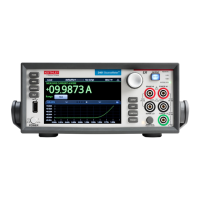
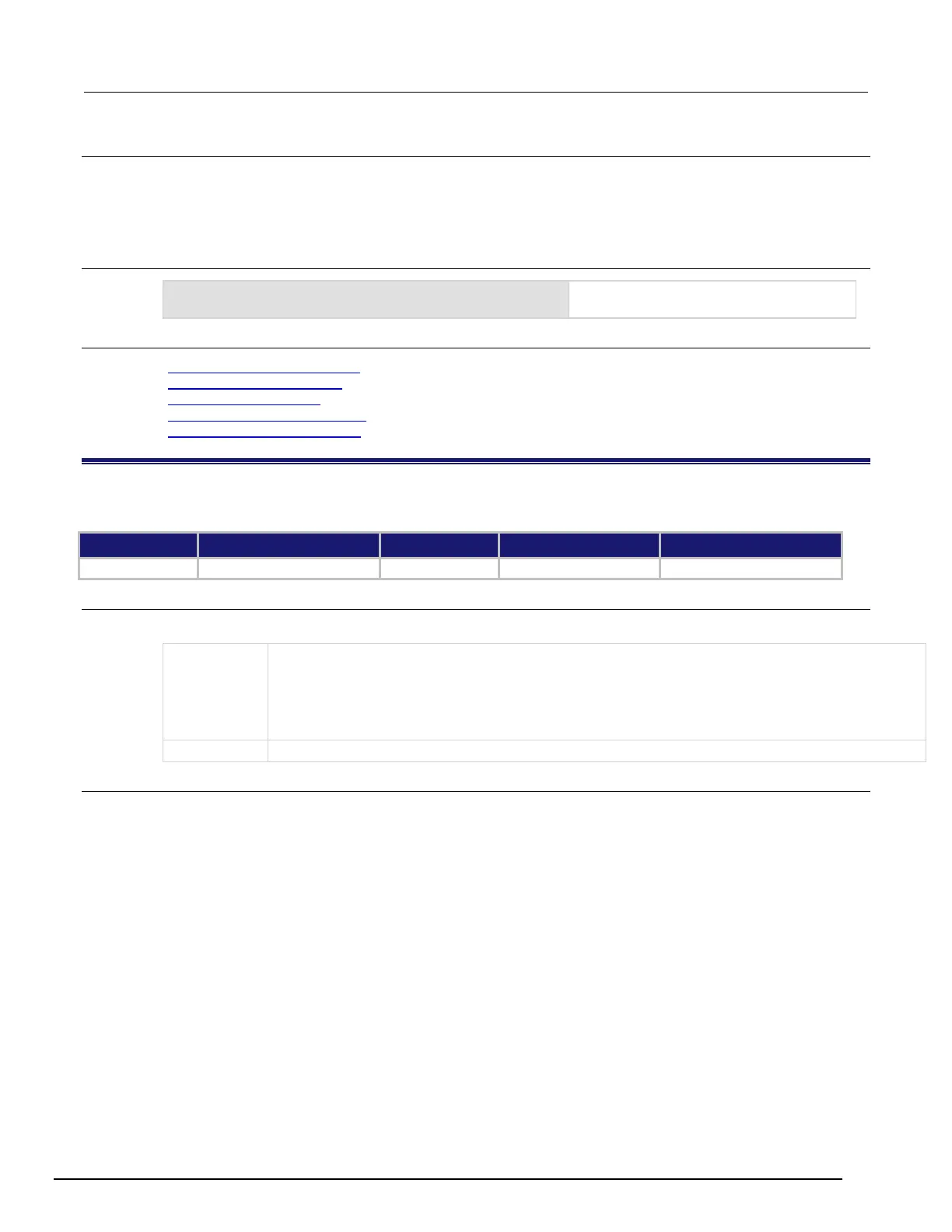